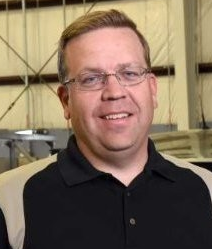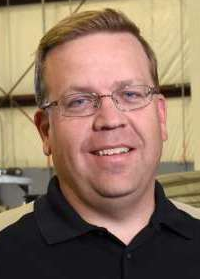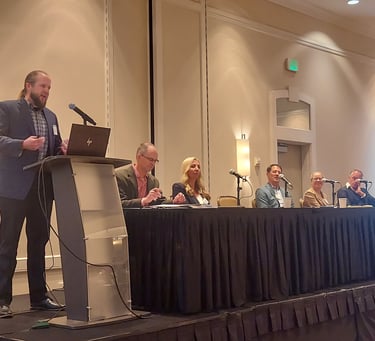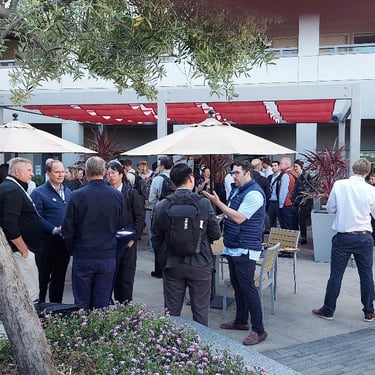10:15 - 10:45 am
Networking Coffee Break
12:00 - 1:00 pm - Lunch for all conference attendees
12:00 - 1:00 pm - Utility Collaboration Forum working lunch discussion -- V2G policy and regulatory issues. Hosted by VGIC and SEPA
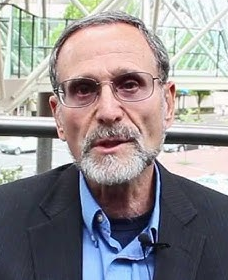

Moderator:
James Mater
Senior Director - Smart Grid
Quality Logic
> profile
Panelists and session detailsTBA
2:30 - 3:00 pm
Networking Coffee Break
Session Details




This panel will explore how states are laying the groundwork for vehicle-to-grid integration, highlighting efforts to foster adoption through supportive policy, utility engagement, and program design. Panelists will examine the importance of aligning regulatory frameworks with market incentives, focusing on fair, transparent compensation mechanisms critical to scaling V2G. The discussion will include methods to measure and value the diverse services provided by distributed energy resources (DERs) behind the meter—ranging from peak load reduction to grid stability—so that both grid operators and asset owners benefit equitably.


Harmonization and interoperability plays a critical role in accelerating vehicle-to-grid adoption worldwide. Industry experts and standards leaders in this session will discuss how aligning global protocols—such as ISO 15118, OCPP, SAE, IEC, and regional regulatory frameworks—can enable seamless communication between vehicles, chargers, and the grid. Panelists will highlight real-world deployments, technical and policy barriers to interoperability, and lessons learned from cross-border collaborations. Attendees will gain insight into how unified standards can reduce market fragmentation, drive innovation, and unlock the full potential of V2G for grid resilience, renewable integration, and global scalability.


This session will explore how vehicle-to-grid technology can deliver tangible value for both the electric grid and consumers, emphasizing that commercialization hinges on clear economic benefits. Panelists will discuss the development of customer programs, the design of tariffs, and compensation structures that incentivize participation while ensuring grid reliability. The conversation will focus on aligning utility, policy, and market frameworks to create a sustainable business case for bidirectional charging, paving the way for scalable adoption and commercialization across the U.S.


Panelists in this session will provide a candid look at the evolving standards landscape for vehicle-to-grid interoperability, focusing on both the technical progress and the structural gaps that still impede deployment. We will outline the latest developments in the draft IEEE 1547 standard, including what milestones have been achieved and what challenges remain, as well as updates from the UL 1741-SC efforts. The discussion will address missing supporting structures—such as payment mechanisms and frameworks to manage the complex interactions between underlying systems—that are essential for market viability. A key theme will be the shift from matched-pair interoperability testing toward certification-based approaches, and the lack of a cohesive framework to enable this transition at scale.


Real-world insights from active vehicle-to-grid and vehicle-to-building (V2B) deployments, highlighting both successes and challenges in bringing these technologies from concept to operation. Presenters will discuss replicable lessons from California’s electric school bus backup power projects, including technical integration, operational performance, and stakeholder coordination. We will also provide an update on Massachusetts’ V2X program, offering a comparative look at program design, grid interaction models, and early market signals. Attendees will gain practical takeaways to inform future projects and accelerate the path toward scalable, value-driven V2G adoption.


This panel of leading standards experts will examine the readiness of North American V2G AC standards for broader market deployment, contrasting it with behind-the-meter applications such as vehicle-to-home. Panelists will address status of the V2G-AC standards for North America including UL 1741 SC, SAE J3072, ISO 15118-20 Am 1 and the new UL 1741 SB CRD. With V2G-AC momentum building, this session offers a timely opportunity for the industry to engage in candid dialogue on the progress of standardizing V2G AC in the evolving energy and mobility landscape.


Moderator:
James Mater
Senior Director - Smart Grid
Quality Logic
> profile


Emerging security challenges are becoming evident at the intersection of electric mobility and the power grid. As V2G systems enable bidirectional energy flow and deep integration between vehicles, charging infrastructure, and grid management platforms, they also introduce new attack surfaces and vulnerabilities. Panelists will examine critical topics such as authentication and encryption for charging communications, risks from compromised devices or networks, supply chain security, and the need for resilient architectures that can withstand both cyberattacks and grid disturbances. One topic in particular will be DC reverse power transfer (V2X) using the DIN 70121 protocol from EVs not designed for V2X. Real-world lessons from pilot projects and related energy-sector security incidents will inform a discussion on best practices, standards development, and collaboration between automakers, utilities, technology providers, and regulators to ensure that V2G can scale safely and securely.
Speaker Biographies
Brian Calka
Senior Vice President, Distribution Operations
DTE Electric


Brian Calka is the senior vice president of Distribution Operations for DTE Electric. In this role, Brian oversees all aspects of the company’s electrical system, including engineering, field operations, vegetation management, emergency response, operational technology, asset management and regulatory functions.
Prior to this role, Brian served as the vice president of Distribution Operations at DTE Electric, where he oversaw operations of the company’s electrical system, including engineering, field operations, vegetation management and emergency response. He has served in various positions throughout his DTE career, including roles in Corporate Finance, Electric Strategy and Renewable Energy. Prior to joining DTE, Brian worked at Ford Motor Company, where he held positions ranging from project management to plant floor supervision.
Brian holds a Bachelor of Science degree in electrical engineering from the University of Michigan-Dearborn and a Master of Business Administration degree from the University of Michigan. He is a trustee at Detroit-based The Children’s Foundation and a board member on several Northville youth sports organizations.
Speaking in:
Welcome Comments
James Mater
Director of Strategy, Smart Grid
Quality Logic


James co-founded QualityLogic and is currently the director of strategy for QualityLogic’s Smart Energy business. From 2001 to 2008, James oversaw QualityLogic as President and CEO. From 1994 to 1999, he founded and built Revision Labs, which merged with Genoa Technology to become QualityLogic. Prior to Revision Labs, James held product management roles at Tektronix, Floating Point Systems, Sidereal and Solar Division of International Harvester. He holds a bachelor’s degree in physics from Reed College, Portland, OR and an MBA from the Wharton School, University of Pennsylvania.
Tim Zgonena
Principal Engineer
Energy and Industrial Automation
UL
Tim Zgonena is a grid interconnectivity expert whose work helps advance grid efficiency, resiliency and safety through UL Solutions’ standards development and conformity assessment services.
Tim has worked at UL Solutions since 1990, and in renewable energy resources, equipment and systems since 1996. Now serving as a principal engineer for Energy and Industrial Automation, Tim is a Distinguished Member of Technical Staff (DMTS) in the William Henry Merrill Society — a designation that recognizes staff members who make significant technical contributions to the safety missions of UL Research Institutes, UL Standards & Engagement and UL Solutions. He also earned an International Electrotechnical Commission (IEC) 1906 Award for exceptional contributions to the IEC’s work in developing global electrical safety standards.
Speaking in:
Workshop 1 - V2G AC Technologies and Standards


Joshua McDonald
Consulting Architect and Engineer
Southern California Edison
Joshua McDonald, a TOGAF certified enterprise architect and consulting engineer, has supported Southern California Edison (SCE) for the past 12 years focusing on enterprise system planning, architecture, strategy, and design, with an emphasis on smart grid, DER, and utility integration. He has extensive experience with PEV and smart inverter standards and supported many SCE DER demonstrations, deployments, and regulatory activities, as well as the development of IEEE, SAE, SunSpec and other standards. His current work is focused on SCE's DERMS implementation, DER integration, Vehicle to Grid, and Microgrids. Joshua has a Master of Science in Computer Science with a specialization in software engineering.
Speaking in:
Workshop 1 - V2G AC Technologies and Standards
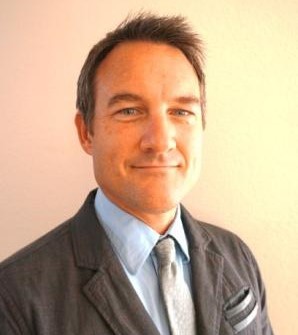

Zach Woogen
Executive Director
Vehicle-Grid Integration Council (VGIC)
Zach is the Executive Director for VGIC, where he leads regulatory, policy, and market development efforts, covering utility rate and program design, interconnection rules and regulations, and managed charging and V2X technology in the leading VGI markets. Previously, Zach was a Senior Manager at Strategen, supporting go-to-market strategy for clients in the V2X and smart charging space.
Prior to joining Strategen, Zach was a Project Manager with Bay-Area Environmentally Aware Consulting Network (BEACN) in energy strategy. He holds a Bachelor of Science in Environmental Economics and Policy from the University of California, Berkeley.


John Holmes
Sr. Principal Energy Advisor
American Honda Motor Company
John Holmes is a Senior Principal Energy Advisor at American Honda Motor Company with over three decades of expertise in electric and hybrid vehicle research, design, diagnostics, and manufacturing, as well as Vehicle-to-Grid (V2G) and Plug-in Hybrid Electric Vehicle (PHEV) technologies. A seasoned leader in sustainability, energy optimization, and program management, he has driven innovations in energy storage IP, product development across consumer, commercial, and industrial markets, and strategic cleantech ventures. John's career spans senior roles at UC San Diego, San Diego Gas & Electric, and multiple clean energy startups, combining technical depth with business acumen to advance transportation electrification, energy systems integration, and policy-driven market solutions.
Speaking in:
Opening Plenary Session
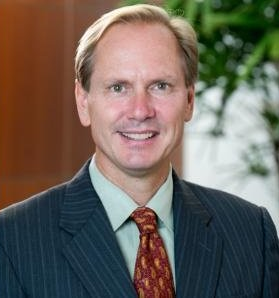

Reuben Sarkar
CEO and President
American Center for Mobility
Reuben Sarkar is President and CEO of the American Center for Mobility, where he leads national initiatives at the intersection of smart mobility, electrification, and cybersecurity. With a career spanning leadership roles in industry, government, and venture advisory, he has driven innovation in clean transportation, advanced energy systems, and emerging mobility technologies. Reuben's background includes board and advisory positions with organizations such as Oak Ridge National Laboratory, Assembly Ventures, Scalvy Inc., and Cecilia, where he shapes strategy, commercialization, and market growth. He holds an MBA with High Distinction from the University of Michigan Ross School of Business and an M.S.E. in chemical engineering.


Blake Heidenreich
Strategic Advisor
Southern California Edison
At Southern California Edison (SCE), Blake has spent the past four and a half years working in the Electrification Department on the Strategy & Program Development team focused on Transportation Electrification. Blake currently contributes to SCE's VGI strategy and the coordination between teams that are impacted by the projected growth of EV and VGI adoption. He leads three initiatives aimed at the integration of EVs into current pilots or the development of new programs / rates that will support customer participation in both V1G and V2G. Collaboration externally with aggregators, EVSEs, and OEMs has helped inform internal efforts that builds upon industry capabilities to enable and incentivize VGI for SCE's customers.
Prior to VGI, Blake lead the development at SCE of a program that had funding approved for over $50M to support the installation of charging stations at New Construction Multi-family sites through SCE's Charge Ready Light Duty program. Projects while on the strategy team have also included the initial development phases of additional charging station programs, research on TE, and the exploration of electrification opportunities outside of TE.
Prior to joining SCE, Blake gained experiences at Deloitte Consulting, Google, and entrepreneurial endeavors in both finance and the non-profit sectors. Blake's first professional experience in the EV industry was during an internship at Tesla. As a loyal Wolverine, his alma mater from undergrad and grad school at the University of Michigan has lead to his joy of college football. Originally from Southeastern Michigan, Blake now lives in Southern California and pursues his greatest hobby of traveling when appreciating life outside of work.


Kate Peters
Energy Research Associtate
The Brattle Group
Ms. Peters specializes in strategic planning and regulatory matters related to an increasingly decarbonized electric power system.
She focuses her research on resource planning in decarbonized electric markets and the economic analysis of distributed energy resources. Ms. Peters has expertise in capacity expansion modeling, electrification grid-impact studies, and the emerging role of virtual power plants (VPPs) in decarbonized markets. She has supported utilities, renewable developers, research organizations, technology companies, and other private sector clients in a variety of energy regulatory and strategy engagements.


Randy Armstrong
Clean Transportation Product Manager
National Grid
Randy Armstrong has been in the EV and energy space since 2006 when he started designing electric vehicles - three years before J1772 was even a standard. Randy later pursued his MBA from Yale, consulted at Navigant/Guidehouse, and worked on stationary energy storage for Stem as a hardware product manager where he helped deploy over 1GWh of energy storage. Randy is currently in Massachusetts working on National Grid's clean transportation team to help manage vehicle to grid integrations across their territory.


Garrett Fitzgerald
Sr. Director, Electrification
Smart Energy Power Alliance
Garrett Fitzgerald is Senior Director of Electrification at the Smart Electric Power Alliance (SEPA), where he leads strategy, research, and industry engagement to accelerate transportation and building electrification as part of the transition to a carbon-free energy system. With a PhD in Earth and Environmental Engineering from Columbia University and a B.S. in Mechanical Engineering from Santa Clara University, he brings deep technical expertise and global experience, including managing Rocky Mountain Institute’s power sector initiatives in India and guiding U.S. utilities, OEMs, and fleet operators on EV and distributed energy strategies. Garrett has advised on cutting-edge projects in managed charging, grid integration, energy storage, and renewable energy.


Frances Cleveland
President and Principal Consultant
Xanthus Consulting International
Ms. Frances Cleveland is President of Xanthus Consulting International, and has consulted on Smart Grid information and control system projects in the electric power industry for over 36 years.
Her expertise has focused primarily on information interoperability standards, cybersecurity issues, and integration of systems, including Distribution Automation (DA), Distributed Energy Resources (DER), Substation Automation, SCADA and EMS systems, Advanced Metering Infrastructures (AMI), Electric Vehicles (EV), and energy market operations. She is currently consulting to NIST as a Technical Champion for the Smart Grid Interoperability Panel (SGIP) on DER and cybersecurity, and to EPRI on the National Electric Sector Cybersecurity Organization Research (NESCOR).
In the International Electrotechnical Commission (IEC), she is convenor of IEC TC57 WG15 for IEC 62351 cybersecurity standards for power system operations and is the editor for IEC TC57 WG17 for IEC 61850-7-420 information standards for DER, EV, and DA. In the IEEE, she is past chair of the IEEE Power and Energy Society’s (PES) Power System Communications Committee (PSCC).
Ms. Cleveland has a bachelor degree in Applied Physics and Electrical Engineering, Harvard University, a master degree in Electrical Engineering and Computer Science, University of California at Berkeley, and a master of business administration from San Jose State University.
Speaking in:
Harmonizing Global Standards for V2G
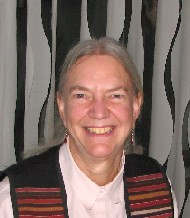

Keyur Shah
Senior Manager
Global Charger Controls and Software
Heliox
Keyur Shah is Senior Manager of Global Charger Controls and Software at Heliox (a Siemens business) and an MBA candidate at Georgia Tech’s Scheller College of Business. With over a decade of experience in electric vehicle charging, powertrain systems, and controls engineering, he has led the development of cutting-edge DC fast charging solutions, including bidirectional and ISO 15118-20–compliant V2G systems. At Heliox, Shah manages a global engineering team, drives new product introductions that have grown market share by over 25%, and serves as chair of the SAE J3105 subcommittee. His career spans leadership roles at Wabtec, GE Transportation, and Proterra, where he contributed to the first battery-electric locomotive, patented multiple EV charging innovations, and advanced interoperability standards. Known for his expertise in systems integration, control algorithms, and industry standards, Shah blends deep technical skill with strategic insight to accelerate the transition to a connected, resilient, and zero-emissions transportation future.
Speaking in:
Harmonizing Global Standards for V2G


Bjoern Christensen
Chief Executive Officer
Next Dimension
Bjoern Christensen is the Managing Director of Next-Dimension, a consultancy company based in California. Next-Dimension focuses on promoting and scaling VGI/V2X technology worldwide. The company's goal is to collaborate with companies globally to scale VGI/V2X technology, ultimately reducing the cost of EVs, enabling more renewables, and providing energy resilience.
Over the past 14 years, Bjoern has been a leader in E-Mobility, Vehicle-Grid-Integration (VGI), as well as Vehicle-to-Everything/Grid (V2X/V2G). He held the position of Chief Strategy Officer (CSO) at Nuvve from 2011 to 2019.
While at Nuuve in 2017, Bjoern played a key role in securing EPIC funding for the INVENT Project (Intelligent Electric Vehicle Integration) at UCSD in San Diego. The primary objective of INVENT was to facilitate the adoption of commercial V2G (Vehicle-to-Grid) fleet deployments in California. The project received funding from the California Energy Commission. Following the successful funding acquisition, Bjoern assumed the role of principal investigator for the project.
Since his time at Nuvve, Bjoern has continued to be one of the key drivers worldwide of industry-defining projects and actual V2X commercial deployments. Since 2011, he has personally been involved in 13 industry-leading V2X and smart-grid projects and initiatives. These projects have been conducted across the globe in places such as Denmark, Sweden, Namibia (Africa - UNDP Headquarters as a showcase), Japan, India, as well as California and Delaware in the United States. Through these projects, Bjoern has gained unique insight, experience, and knowledge of what works, what doesn't, and how to scale the V2X transformation. Bjoern departed Nuuve in 2019 to establish his own consultancy company, focusing on VGI/V2X.
Prior to joining Nuvve, Bjoern had a long career at Siemens AG in Munich, Germany. During his time at Siemens, Bjoern held various roles and progressed through the ranks. In his final position, he was the Co-Founder, CEO, and President of Siemens Venture Capital, where he had global responsibility for Siemens' Corporate Venture investments.
Speaking in:
Harmonizing Global Standards for V2G
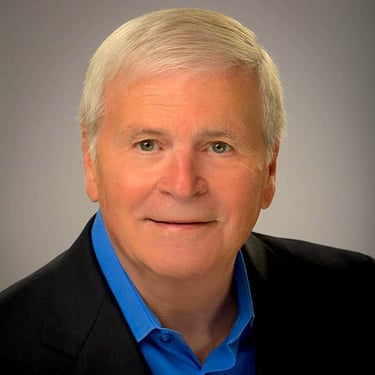

Frank Tuffner
Staff Research Engineer
Pacific Northwest National Laboratory (PNNL)
Frank Tuffner has been with Pacific Northwest National Laboratory since 2008.For the past 10 years he has been supporting distribution-level analysis, small signal stability of the transmission power grid, and applications of signal processing concepts to power systems. Distribution-level work has included PNNL’s plug-in hybrid electric vehicle (PHEV) Smart Charger project, programming for the GridLAB-D software, and applications of the GridLAB-D software to distribution-level analysis. On the transmission level, he has been involved in looking at interarea oscillations on the power system and other analysis of phasor measurement unit data.


Frances Bell
Founder and CEO
Bidirectional Energy
Frances is co-founder and CPO of Bidirectional Energy. Her career has been focused on the integration of distributed energy resources (DER) to grid through the development of communications protocols, technical standards development, project deployment, and product development. Her most recent roles have been leading grid innovation at Kevala modeling the impact of EV charging on the grid; heading-up applications engineering at AMS (now Fluence) deploying stationary storage and developing a VPP to bid resources into energy programs; and power systems engineering at Tesla (previously SolarCity) in the grid engineering group piloting innovative methods to integrate solar into the grid. Prior to those roles, Frances was in the transmission planning department at PG&E. Frances has a M.S. in power systems, electrical engineering from Tufts University and a B.S. in electrical engineering, engineering science from Smith College.


Glenn Skutt
Chief Technology Officer
Fermata Energy
A well-known expert in electromagnetics and design of magnetic devices for power electronics applications in utility application markets, Glenn Skutt leads the development of the bidirectional charging hardware and electrical engineering design team at Fermata Energy. He has 25+ years of design and analytical experience as an electrical engineer, and has served as the principal investigator for multiple government research projects and critical contracts in high reliability power electronics and power inverter operation. He is the founder and president of PowerHub Systems.


Mengjia Cao
High Voltage Charging Standards and Regulations Leader
General Motors
Mengjia Cao is the High Voltage Charging Standards and Regulations Lead at General Motors, where she drives the company’s global charging strategy, chairs the SAE Hybrid Communication and Interoperability Task Force, and represents the U.S. in ISO 15118 standard development. With over a decade of experience in electric vehicle charging systems, she has played key roles in shaping industry standards, fostering interoperability, and advancing charging technology readiness from innovation to production. Prior to joining GM, Mengjia spent more than 10 years at Stellantis, leading high-voltage charging initiatives, developing power electronics systems, and ensuring compliance with international charging regulations. She holds a Master’s degree in Electric-drive Vehicle Engineering from Wayne State University and a Bachelor’s degree in Traffic Engineering from Nanjing University of Science and Technology.


Andrew Cifala
Strategic Planner for Grid Modernization
Keysight Technologies
Andrew Cifala is the Strategic Planner for Grid Modernization at Keysight Technologies, where he shapes strategies and technologies to accelerate the transformation of the modern power grid. With expertise spanning distributed energy resources, renewables, microgrids, energy storage, grid interconnection, EV charging infrastructure, and vehicle-to-grid integration, he bridges the gap between business strategy and technical innovation. Andrew has led complex R&D initiatives, contributed to key industry standards, and guided new technologies from concept to market adoption. An active member of IEEE, UL, and EPRI working groups, he plays a leading role in advancing interoperability, reliability, and value creation for the evolving energy ecosystem. He holds an M.S. in Electrical Engineering from Montana State University–Bozeman and a B.A. in Mathematics with an engineering concentration from Carroll College.


Alex Macharia
VGI Program Manager
The Mobility House
Alex Macharia is the Vehicle-Grid Integration (VGI) Program Manager at The Mobility House, where he leads commercial bidirectional charging initiatives and new product introduction (NPI) projects across North America. With more than a decade of experience spanning automotive development, electrification, and clean-tech, Alex has built a career at the intersection of technology, strategy, and program leadership. He previously served as Senior Technical Program Manager for Automotive Partnerships at Nuvve, advancing OEM collaborations to deploy vehicle-to-grid solutions, and spent over 10 years at Cummins in roles ranging from OEM integration to global applications leadership. Alex’s expertise covers EV product strategy, charging infrastructure, grid-interactive technologies, and cross-sector partnerships. He holds a Master of Science in Engineering from Purdue University and a Business Certificate from Indiana University’s Kelley School of Business.


Elijah Sinclair is Senior Program Manager for Clean Transportation at the Massachusetts Clean Energy Center (MassCEC), where he leads initiatives to advance e-bike adoption, electrify vehicles-for-hire, and demonstrate vehicle-to-grid integration. With experience spanning program design, stakeholder engagement, and technology deployment, Elijah has played a pivotal role in shaping Massachusetts’ clean mobility landscape, including launching the statewide E-Bike Voucher Program and supporting innovative grid-connected transportation pilots. His prior work at Synapse Energy Economics and in energy efficiency consulting honed his expertise in policy, market analysis, and sustainable technology adoption. Elijah is a Brandeis University graduate in Economics and Environmental Studies.


Yukihiro Hatagishi
Electric Vehicle Charging Hardware Systems Researcher
National Renewable Energy Laboratory
Yukihiro Hatagishi has a strong background in power electronics, and has contributed to the development of vehicle-to-grid using AC (V2G AC). With his proven success in leading a team to develop an on-board charger compliant with IEEE 1547-2018 and SAE J3072, and as a major contributor to a V2G AC project led by Southern California Edison and Stellantis, his focus has shifted to a V2G AC system including the support of standards, and he is contributing to the expansion of the evaluation platform to address V2X AC at NREL.
His standard participations are: UL1741SC, ISO 15118-20 Addendum, V2G AC Profile, SAE J2847/3, 5 and SAE J3072.


Richard Carlson
Principal Research Engineer
Idaho National Laboratory
Richard “Barney” Carlson is a Principal Research Engineer at Idaho National Laboratory (INL) with over two decades of experience advancing electrified transportation technologies. At INL’s Advanced Vehicles Group, he leads research on electric vehicle charging infrastructure—including DC fast charging, extreme fast charging, and wireless power transfer—while addressing integration with autonomous, connected, electric, and shared (ACES) mobility systems. His work spans the development and harmonization of industry codes and standards, cybersecurity risk assessment, and the creation of novel concepts to improve charging safety, efficiency, and performance. Prior to joining INL, Barney was a Research Engineer at Argonne National Laboratory and a Research Test Engineer at General Motors, focusing on advanced vehicle systems and powertrain innovation. He holds a Master’s degree in Mechanical Engineering from the University of California, Davis, where he competed in and helped lead multiple award-winning hybrid and electric vehicle projects.
